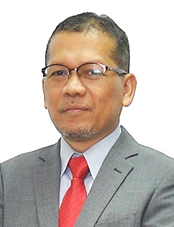By: Professor Dr. Ahmad Hariza Hashim
- Rising costs of living is forcing the average/poor Malaysians to move out to live on the fringes of cities: Is this a healthy/normal phenomenon?
This is what the west were experiencing which they called it urban sprawl. Now we are facing it and it might not be the real urban sprawl, but the similarities is there where the development promotes the expansion of auto dependence and the government then need to build highway to help reduce congestion. From the environmentalist point of view, then this is not healthy because now people need to commute quite a distance from their house to their work place especially for those who work in the city centre. Because of our public transportation is not that reliable and this made people very dependent on car to travel from one place to another place. This will of course contribute to congestion on the road especially in the morning, going to work and in the evening, coming back after work. This congestion will cause air pollutions and also sound pollutions. They generate more per capita pollution and carbon emissions than their urban counterparts because of their increased driving. It will also increase people time spending on the road and the probability of experiencing accidents and suffer more traffic fatalities is high. From the car industry point of view this is good for their market and more profit for them. From a child development perspective, they might say living in the city centre is not good for the development of the children especially when they are congested in a small space, living in a high density area and very fast and hectic life. Children need space for them to experience and explore the world surrounding and the family will feel secure to let the kids do this if they were to live in the fringe where the landed property prices is still affordable to them. However, in today's world and with the skyrocketing of the property value even many nowadays could not afford to own a landed property here and they have no choice but to live in high density situation or else they have to live further away and this mean they need to travel a longer distance.
- What do you see are the effects of this phenomenon on the average Malaysian family?
They have no choice to live further away from the city and they have to fork some money to buy cars and sometimes not one car but two cars or more because both husband and wives did not work in the same place and to commute together to work is out of questions. This contributes to the ever increased in traffic congestion or traffic crawls. And car pooling programs have already introduced but fail. They have to go out early in the morning and arriving home late in the evening and normally exhausted due to work and also because of long hour of travelling. They may spend less quality time with their family because when they arrive home, they are already tired and need to rest in order for them to restore back their energy for the new day, the following day. Another important issue is that, there is a possibility that racial segregation among ethnic group could happen again, as the Chinese can still afford to buy the property in the city but the Malay and the Indian could not afford to and they will move to the urban fringe which they feel that they could afford to own a property and normally they will choose an area where they feel secure an area where they are the majority.
- If we reach a point where the poor are forced to live on the fringes of cities, while the rich live within, what kind of society are we looking at? Is this being a developed country mean?
Nowadays the trend is that the rich prefer to move outside the city where they can live in a mansion while the poor has to live in the city and because of the high price of property they have to live in a small and cramp space. Reasons cited include a preference towards lower-density development (for lower ambient noise and increased privacy), better schools, less crime, and a generally slower lifestyle than the urban one. While the poor living in a high density area need to adjust their way of life where they will face lack of privacy which they have to bear and also they have to follow many unwritten rules in order to live harmoniously, The theory goes that as people are moved closer together geographically their actions are more likely to notice impact others around them. This potential impact requires the creation of additional social or legal rules to prevent conflicts. A simple example would be as houses become closer together the acceptable maximum volume of music decreases, as it becomes intrusive to other residents. Social issues especially among teenagers, male and female can also increase because of the effect of high density.
- Our government subsidies fuel for consumption by Malaysians. If this phenomenon persists, we will see the umpteenth amount of subsidy money being burnt on the roads just to get our workforce to and from work. Your comments on this?
The government did not just need to continue subsidizing fuel but they also need to clear more land to build road and highway to reduce congestion and more land also needed to build residential area, meaning that more agricultural land is being converted into residential and commercial area and this could affect the economics of the country in the long run and also the climate of the country when green area being converted into concrete jungle.

Writer
Professor Dr. Ahmad Hariza Hashim
Dean, Faculty of Human Ecology, UPM
President, Malaysian Consumer and Family Economics Association (MACFEA)
2018/2020
Date of Input: 04/09/2019 | Updated: 04/09/2019 | rozlita
MEDIA SHARING































